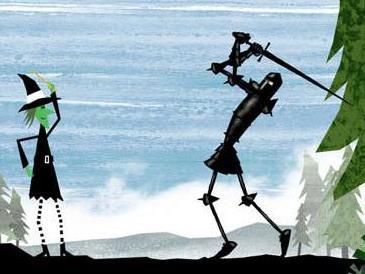Kim Dalton’s forensic assault on the ABC in the latest Currency Press Platform Paper focuses on his own area of responsibility – the drama, children’s programs, comedy, factual and general entertainment which is run by ABC TV. Using this, he describes a broadcaster which is out of control, beyond scrutiny and indifferent to government.
At the same time, he is not arguing against the editorial and resourcing independence of news and current affairs. Or indeed, of policy on ABC radio. He is really saying that each service works to a different idea of responsibility and autonomy.
His story is well illustrated in the sad tale of children’s television.
—-In its triennial funding budget of 2009, the ABC received an additional and specific allocation in order to expand its children’s offering. This allocation rose over three years to $27 million a year and remained at that level as part of base and indexed funding. The ABC had promised the Government and the Australian Children’s Television Foundation (ACTF, its partner in a very public funding campaign) the production industry and ultimately its audiences, a dedicated channel for school-age children, with a comprehensive offering across all program genres and with an Australian content level of 50 per cent.
The pitch to government from the ABC and the ACTF was expansive. It was underpinned by the promise that the new channel would achieve 50 per cent Australian content. The Commonwealth had already been spending significant money through its screen agencies and tax-based measures on children’s content to support the Children’s Television Standards (CTS) drama quotas that applied to the commercial networks. As a result there was a rich legacy of work available for the new channel in the form of highly subsidised programs that had already been shown on commercial networks once or twice. The new channel would have a wide choice. It would provide a broad and comprehensive service delivering entertainment, education and information.
This was a new and very special service and the impact of this new channel was significant. The fact that the Prime Minister was invited and agreed to launch the service underlined that this was something special, that something new was being created for Australian children and their families.1 The Australianness of the service was fundamental. It was about citizenship, about nationhood, about ensuring Australian children grew up hearing Australian voices and Australian stories.
Within three years the ABC was delivering its 50 per cent Australian content promise on the new ABC3. Importantly, it was also delivering the diversity promised across live action drama, animation, comedy, reality, daily news and current affairs, studio-based entertainment shows and factual programs. The ABC also set out to increase the breadth and depth of the children’s production sector. It did this by discovering and developing new on-screen and off-screen talent and by attracting into the children’s area existing senior producers, writers and directors working in adult television. Audiences responded positively. By 2013–14 the ABC’s reach among five to twelve-year-olds was 43.6 per cent and its daytime share was 30 per cent.
This initiative was transformative. Until that point the ABC’s service for school-age children had been limited to morning and afternoon blocks on its main channel.
Within ABC TV, and the ABC more generally, its children’s offering had not been a priority and the children’s budget had been steadily reduced. Ultimately, it was a service relying on cheap UK imports. The networks too were obliged under the CTS to screen some Australian children’s drama but it was rarely well promoted or programmed. Neither the ABC nor the commercial networks valued children’s television and argued that in any case Australian children did not want to watch it.
ABC3 went to air on 4 December 2009 and was an almost overnight success. Children found the channel quickly and as the audience figures came in the commonly held view that children did not like children’s content was proved to be wrong. With funding now available, and a broad range of genres being commissioned, the Australian production industry began to take notice. Those among the larger and more established companies that had never bothered with children’s television now became interested in the production and creative opportunities. Competition for commissions improved overnight, experienced creatives became involved and programs started appearing on air with levels of creative ambition and standards of writing, direction, acting and storytelling that had not until then been achieved.
However, the reality was that the ABC had never internalised the idea that children’s television was important. Children’s programming is just not in the DNA of the ABC. Ultimately, in the absence of commitment from individual senior managers, children’s TV is not prioritised. The institutional commitment is absent and now, just a few years later, this brief period is beginning to look like a golden era that was all too soon over.
Notwithstanding the very specific allocation from the Rudd Labor Government, within less than four years the ABC was reallocating these funds. While Labor was still in power up to a third of the budget had been transferred out of children’s. Further cuts have been imposed in the years since: it is estimated since 2012–13 the ABC’s children’s budget has been reduced by 50 per cent or more than $20 million, an amount that is disproportionate to cuts the ABC received from the Abbott Coalition. The ABC also quietly halved its Australian content objective from 50 per cent to 25 per cent2 and with fewer funds the children’s department has inevitably been commissioning a less diverse slate.
This article is an edited excerpt of Kim Dalton’s Platform Paper for Currency House, Missing in Action: The ABC and Australia’s screen culture published by Currency House today.





